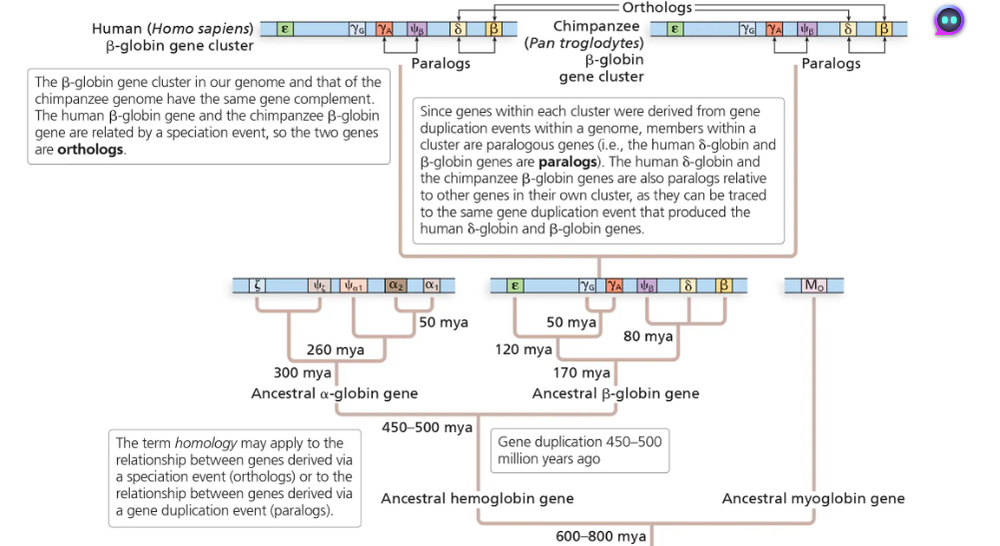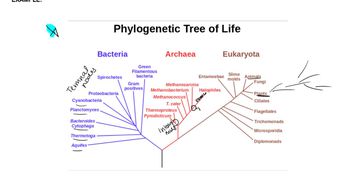Researchers have compared candidate loci in humans and rats in search of loci in the human genome that are likely to contribute to the constellation of factors leading to hypertension [Stoll, M., et al. (2000). Genome Res. 10:473–482]. Through this research, they identified 26 chromosomal regions that they consider likely to contain hypertension genes. How can comparative genomics aid in the identification of genes responsible for such a complex human disease? The researchers state that comparisons of rat and human candidate loci to those in the mouse may help validate their studies. Why might this be so?
Table of contents
- 1. Introduction to Genetics51m
- 2. Mendel's Laws of Inheritance3h 37m
- 3. Extensions to Mendelian Inheritance2h 41m
- 4. Genetic Mapping and Linkage2h 28m
- 5. Genetics of Bacteria and Viruses1h 21m
- 6. Chromosomal Variation1h 48m
- 7. DNA and Chromosome Structure56m
- 8. DNA Replication1h 10m
- 9. Mitosis and Meiosis1h 34m
- 10. Transcription1h 0m
- 11. Translation58m
- 12. Gene Regulation in Prokaryotes1h 19m
- 13. Gene Regulation in Eukaryotes44m
- 14. Genetic Control of Development44m
- 15. Genomes and Genomics1h 50m
- 16. Transposable Elements47m
- 17. Mutation, Repair, and Recombination1h 6m
- 18. Molecular Genetic Tools19m
- 19. Cancer Genetics29m
- 20. Quantitative Genetics1h 26m
- 21. Population Genetics50m
- 22. Evolutionary Genetics29m
15. Genomes and Genomics
Comparative Genomics
Problem 23
Textbook Question
In the globin gene family (shown in the below diagram), which pair of genes would exhibit a higher level of sequence similarity, the human δ-globin and human β-globin genes or the human β-globin and chimpanzee β-globin genes? Can you explain your answer in terms of the timing of gene duplications?

 Verified step by step guidance
Verified step by step guidance1
Understand the globin gene family: The globin gene family consists of genes that encode globin proteins, which are part of hemoglobin. These genes have evolved through gene duplication events, followed by divergence over time.
Identify the gene pairs in question: The problem compares the sequence similarity between (1) human δ-globin and human β-globin genes, and (2) human β-globin and chimpanzee β-globin genes.
Consider the evolutionary timeline: Gene duplications, such as the one that produced δ-globin and β-globin, occurred earlier in evolutionary history. This means that these genes have had more time to accumulate mutations and diverge in sequence.
Compare species divergence: The human β-globin and chimpanzee β-globin genes are orthologous genes, meaning they are derived from a common ancestor and have diverged only since the human-chimpanzee lineage split. This divergence is more recent compared to the duplication event that created δ-globin and β-globin.
Conclude based on timing: Since the human β-globin and chimpanzee β-globin genes have had less time to diverge compared to the human δ-globin and human β-globin genes, the former pair would exhibit a higher level of sequence similarity. This is due to the more recent common ancestry of the orthologous genes.
 Verified video answer for a similar problem:
Verified video answer for a similar problem:This video solution was recommended by our tutors as helpful for the problem above
Video duration:
2mPlay a video:
Was this helpful?
Key Concepts
Here are the essential concepts you must grasp in order to answer the question correctly.
Gene Duplication
Gene duplication is a process where a segment of DNA is copied, resulting in two identical or similar genes. This can lead to genetic redundancy, allowing one gene to maintain its original function while the other may evolve new functions. Understanding the timing of these duplications is crucial for analyzing genetic similarities, as genes that diverged more recently are likely to show higher sequence similarity.
Recommended video:
Guided course

Duplications
Sequence Similarity
Sequence similarity refers to the degree to which two DNA, RNA, or protein sequences resemble each other. It is often measured using various algorithms that assess the alignment of sequences. Higher sequence similarity typically indicates a more recent common ancestor or shared evolutionary history, which is essential for comparing genes from different species or within a gene family.
Recommended video:
Guided course

Sequencing Difficulties
Phylogenetic Relationships
Phylogenetic relationships describe the evolutionary connections between different species or genes based on their genetic information. By constructing phylogenetic trees, scientists can visualize how closely related different genes or organisms are, which helps in understanding the timing of gene duplications and the evolutionary history of gene families, such as the globin gene family.
Recommended video:
Guided course

Phylogenetic Trees
Related Videos
Related Practice
Textbook Question
487
views


